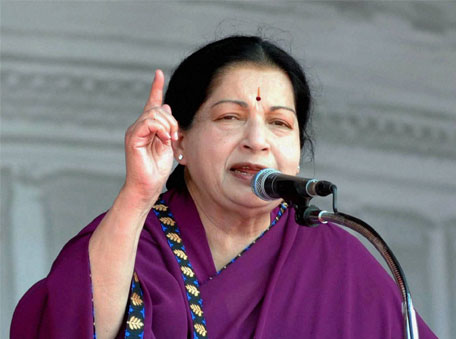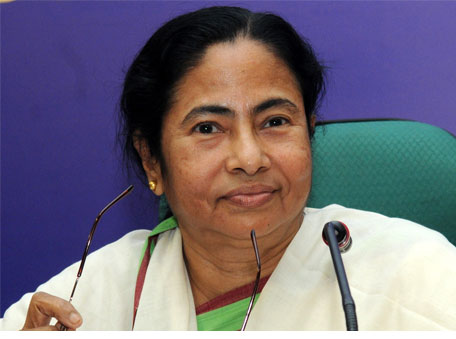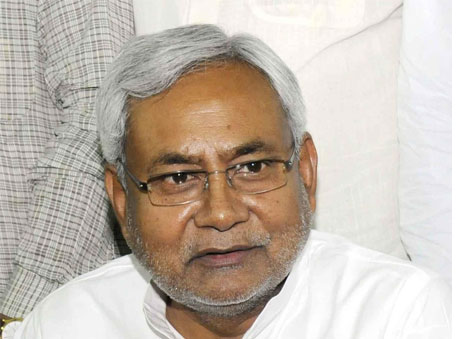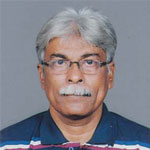By now the heat and dust of the assembly elections in five states has settled, and respective players have gone back to their drawing boards to devise strategies for the future. Ideally, this should have been the beginning of a new chapter.
But before that, let us quickly look at the political scenario of India today. The historic decline of Congress continues. The party, with its image of corruption cast in stone, remains intact. Out of the five assembly elections held in April 2016, Congress could retain power only in Pondicherry, a tiny state, which is of no significance in the politics of the country.

A Federal Front?
This dream run of the BJP has put the regional satraps on high alert. They know by now that for their very survival, they need two powerful national parties where they can play one against the other. Regional leaders like Mamata Banerjee, Chandrababu Naidu, Jayalalithaa and few others, will sup with anybody and everybody for their political interests. Now they see the decline of Congress and they also see that there seems to be no chance of its survival in the near future.
This is perhaps why Mamta Banerjee has thrown up a new idea while she was being sworn in as the chief minister. On 27 May 2016, while she was taking charge as the chief minister of West Bengal for the second time, she announced that time has come to float a ‘Federal Front’ in our country. This announcement assumes importance as it was made in the presence of many non-BJP, non-Congress leaders and chief ministers like Arvind Kejriwal of Delhi and Nitish Kumar of Bihar.

The idea of a ‘Federal Front’ in a way is not new. In the early 1980s, the then chief minister of Andhra Pradesh late N.T. Rama Rao had floated this idea which was promptly supported by the then chief minister of Jammu and Kashmir Dr. Farooq Abdullah. Both had suffered a lot at the hands of a powerful central government headed by Mrs. Indira Gandhi. Though it was quite a sensible idea, it was not taken further and it died a natural death.
The idea behind federal front is to have a club, an association of leaders of regional parties who continuously experience discrimination by the Centre. The purpose of the Federal Front would be to maintain the federal structure of our Constitution. This is indeed noble and badly required. But then as we all know, politicians do not think in terms of long term game. For them what matters is the here and now.
Before one gets into the nitty-gritty of the issue, let us understand quickly the idea of a federal system. When our Constitution-makers were debating the form of our future government, they had two options to choose from. One was the unitary model, popularly known as ‘British model’, suitable to small and homogenous countries. Then there was the federal model, also known as the ‘American model’, which gives tremendous powers to the confederating states. Both were unsuitable to Indian conditions. Hence we borrowed the best of both these models and created the Indian political system, which is closer to the American model. Another practical consideration that had weighed on the minds of Constitution-makers was that by the Government of India Act, 1935, some sort of a federal system was already in place in India.
This is how we adopted the federal system of governance, which basically means two sets of government. One government at the central level and other, at the state level; both directly elected by the people. To avoid clashes between these governments, we have a list system. There is the ‘Union List’ which has subjects under the purview of the Union government, and there is the ‘State List’ which has subjects under state governments. In addition, we have a third list, ‘Concurrent List’ where both can operate.
When reality dawned
This arrangement is ideal on paper, but in real life, the picture is not so rosy. In reality, the Central government more often than not, functions like a big brother and keeps breathing down the neck of many state governments, especially if it’s a government of some other political party. This reality of power politics lay hidden from public glare till 1967. That year, the DMK came to power in Tamil Nadu. Within two years, the DMK realised that the Central government of Congress party is making its life miserable. It further realised that a state government is quite powerless in our scheme of things. Utterly frustrated, in 1969, it appointed a committee led by Justice Rajmannar to study the issue of Centre-State relations. The Rajmannar Committee unambiguously recommended a better share of financial resources to the states, abolition of article 356, and financial autonomy to the states.

As the DMK realised, so did the Shiromani Akali Dal (SAD) in Punjab. In 1973, the SAD had held in annual conference at Anandpur Sahib and resolved to ask for more autonomy to the states. The central government ignored these initiatives. It is argued by many scholars that were the Centre to address even a handful of issues mentioned in the Anandpur Sahib resolution, the separatism in Punjab of the 1980s would have been easily put down. Then in 1977, the Left Front came to power in West Bengal, which too demanded abolition of article 356 and more financial autonomy to the states.
It can be seen from above that many regional parties were dead against the overbearing attitude of the Centre. This picture however, drastically changed in the 1990s, when Congress started crumbling down and the BJP was yet to fill in the gap. This gap was filled in by many ambitious regional parties like SP (Samajwadi Party), BSP (Bahujan Samaj Party), TDP (Telugu Desam Party), TMC (Trinamool Congress), etc. This is how the ‘era of coalition politics’ dawned in India. During 1996-98 we had the United Front government of nearly a dozen parties. Then during 1998-2004, we had the BJP-led National Democratic Alliance (NDA) in which the BJP had 182 MPs and the remaining numbers came from dozens of regional parties. Even from 2004-2014, the Congress-led United Progressive Alliance (UPA) had followed the same script. Congress could win nearly 200 MPs and balance could be chipped in from the regional parties.
These regional parties demanded and got their pound of flesh. A Chandrababu Naidu here or a Jayalalithaa there could get what they wanted from the Centre. No wonder the debate and the demand for Federal Front was not heard during the coalition era. This would have continued but for the miraculous victory of BJP in May 2014 general elections in which the Modi-Shah duo managed to win 282 MPs. Though today the BJP-led NDA is in power at the Centre, it is really a BJP government that is ruling the country.
Today, while on the one hand we notice the end of the coalition era, on the other hand, we also notice the revival of the Mrs. Indira Gandhi era, when she could dismiss non-Congress state government without any valid reason. Unfortunately, the Modi government is following her footsteps. Look at the mess in Arunachal Pradesh and Uttarakhand. Despite a comfortable majority, state governments were dismissed for petty political gains. This is perhaps why the likes of Mamta Banerjee must have felt the need to revive the idea of a Federal Front, where like-minded regional parties could come together and ensure that the central government does not usurp their legitimate power. In that context, the idea of a Federal Front must be welcomed. But how it actually gets played out in the political arena, remains to be seen. At the regional level, each satrap possesses a king-size ego. This may come in the way of a Federal Front.

